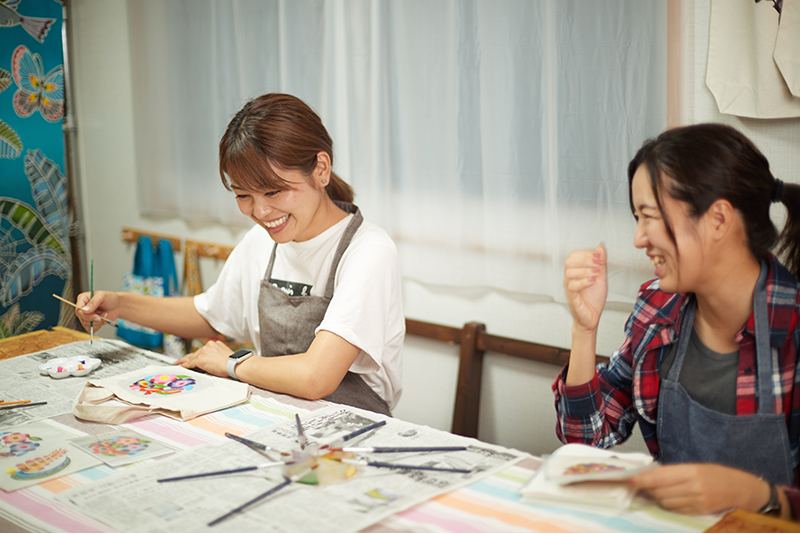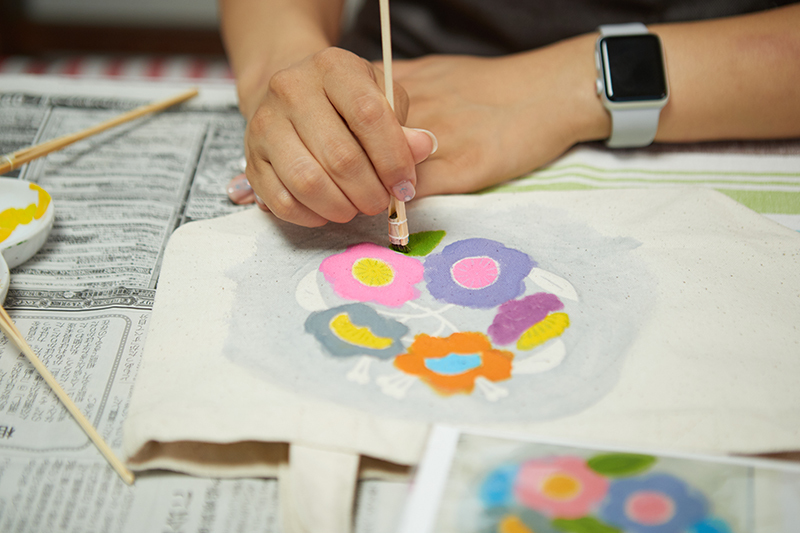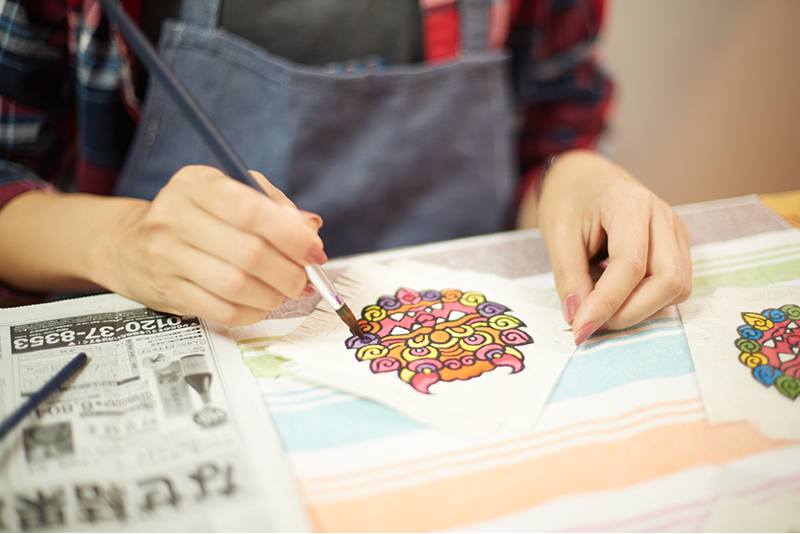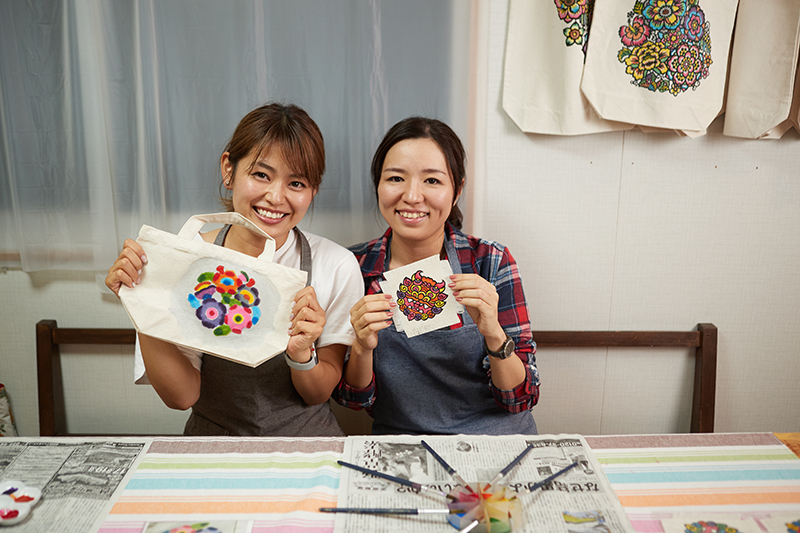Encounter magnificent nature, a unique culture, and memories of ancient times
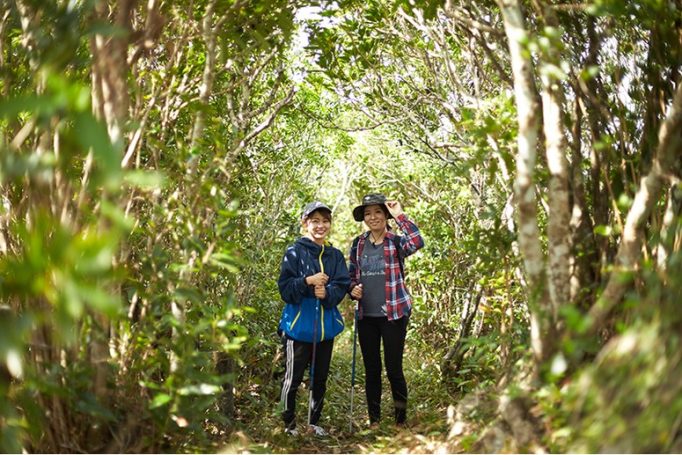
Yanbaru is an area with unspoiled mountains and forests in the northern part of Okinawa Island. It was designated a national park in 2016 because it has the largest subtropical forest in the country and many rare flora and fauna, such as the Okinawa rail, a natural monument, and Camellia lutchuensis, a species endemic to the Ryukyu islands. Activities where you can experience the wilderness of the Yanbaru forest to the full will refresh your mind and spirit, while bingata dyeing and the local cuisine work their therapeutic charm. Experience the gentleness of everything Okinawa with your five senses.
9:00~12:00
Into the storied world where the Yanbaru forest grows
Mt. Nekumachiji is the highest mountain in Ogimi village, one of the three villages of Yanbaru designated as a national park. At 360.7 m, it isn’t particularly high, but it has many attractions and is great for trekking. Rather than a mountain where you climb to the top, it’s more suited to walking while looking at beautiful flowers and animals.
As there are ups and downs and rocky sections, it’s best to wear clothes that you can get dirty, and sturdy shoes. It’s convenient to have a rucksack to leave both hands empty. Also have drinks, a towel and a hat. As we’re beginners, we booked a local trekking guide. An experienced guide not only takes you on the recommended routes, they also tell you about mountain walking, history, flora and fauna.
【A special experience full of mysterious power】
We met with the Nature Guide in the open space of the observation deck car park near the trailhead. The guide has been active for many years while running a shikuwasa farm in Ogimi village. After doing some light warm up exercises, we’re off!
One step into the forest and you’re among subtropical plants. The difference in the scenery from the mainland is overwhelming. We walked while listening to the wind and the sounds of birds, enjoying the forest therapy. We felt completely at one with the warmth of the sun and the smell of the greenery and the soil. You feel fresh when you take deep breaths of the sweet air. You can enjoy experiencing yourself as part of nature.
Soon after entering the forest, we found a huge Cyathea fern tree. It extends like a giraffe’s neck and spreads out its large leaves. Going further, we found an endangered tree lizard and a Ceylon blue glassy tiger butterfly that had just emerged. The small white flowers of C. pauciflorus were also in bloom. They’re so small you don’t normally notice them. There was something encouraging about their vigor.
It took about an hour to arrive at the rest area at 329 m. There are eight places in Okinawa with colonies of camellias, and this area is one of the three places with particularly spectacular growth. Camellia lutchuensis, a species endemic to the Ryukyus, was bearing fruit. So the guide took the fallen fruit, broke it with a stone, and made camellia oil the old-fashioned way. When you rub the crushed fruit on your hand, it immediately produces a luster. It’s a natural hand cream that provides protection against UV. Even after washing your hands, your skin feels moist for a while.
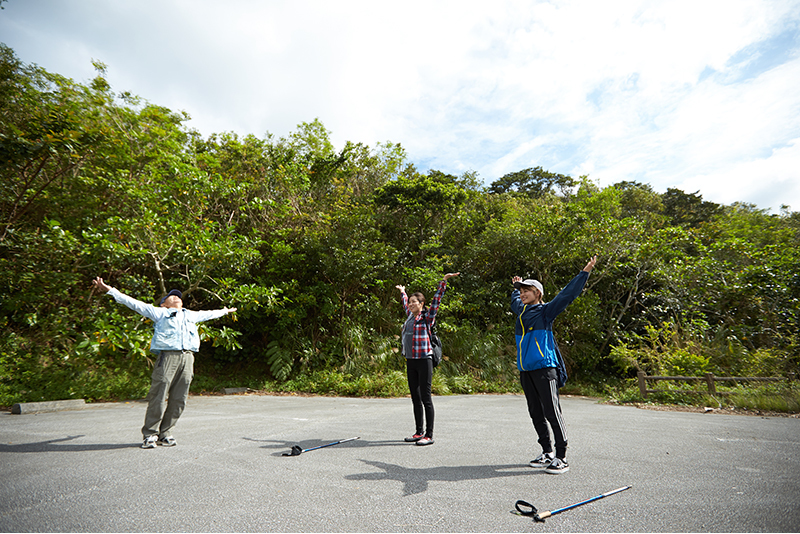
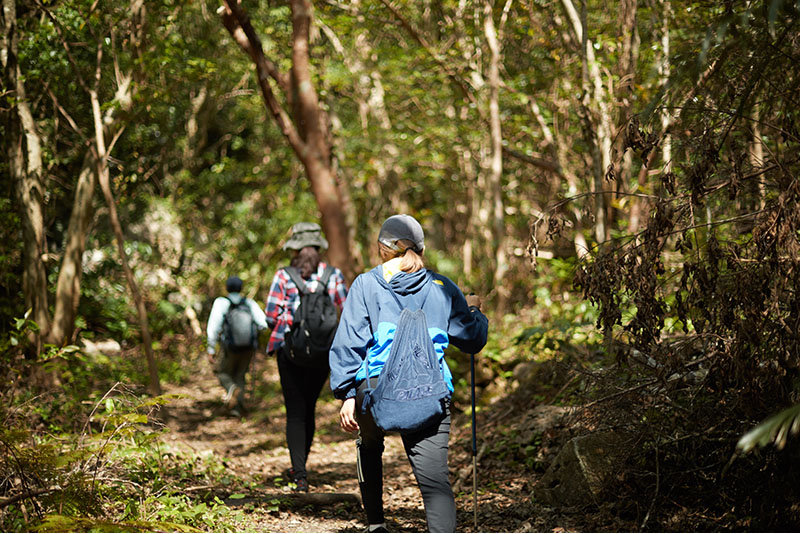
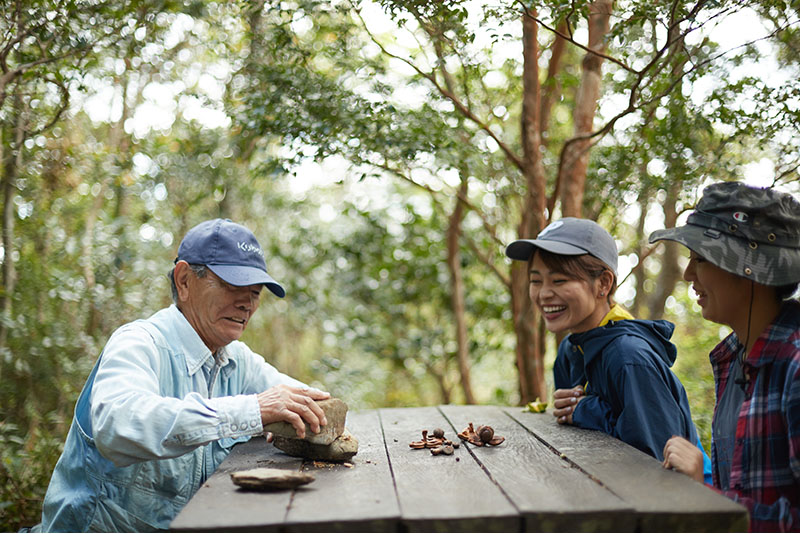
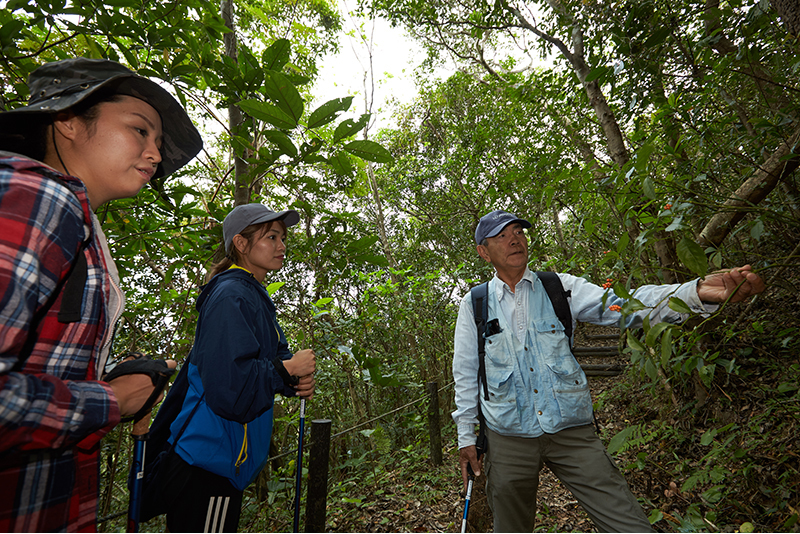
After the break, we headed to the top. As soon as you think you’ve climbed, you’re going down again, then it’s flat for a while. It feels like you’re on an expedition. We finally arrived at the summit about 15 minutes after leaving the rest area. A magnificent view of the three villages of Yanbaru, surrounded by the beautiful sea and the sky, lay before us. It encompasses Cape Hedo to Okuma Beach in the north, Iheya Island in the west, and Kouri Island and Ie Island in the south. To get here, you have to go up some steep slopes, but the amazing view makes you forget your tiredness entirely. It offers a feeling of satisfaction different from everyday life. We savored the joy of climbing.
We rested for a while before going back down the mountain. Along the way, we saw rocks thrown up 200 million years ago, cinnamon trees more than 100 years old, and nesting holes of the Okinawa woodpecker, a natural monument. The last spot is a huge tree with seven trunks like the palm of a hand. When you get between the trunks, there’s a strange feeling of being enveloped in a mother’s womb. We were able to take some mysterious-looking photos.
At the end we went back to the start point and the trekking was over. There were so many extraordinary things to encounter that three hours passed in no time. Working up a good sweat makes you feel at one with nature. It feels as though the forest of Yanbaru can teach us that humans are part of the cycle of nature.
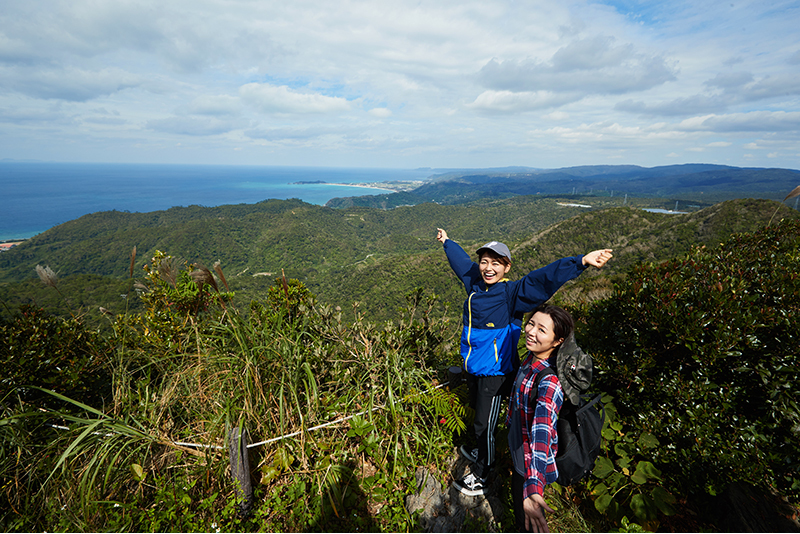
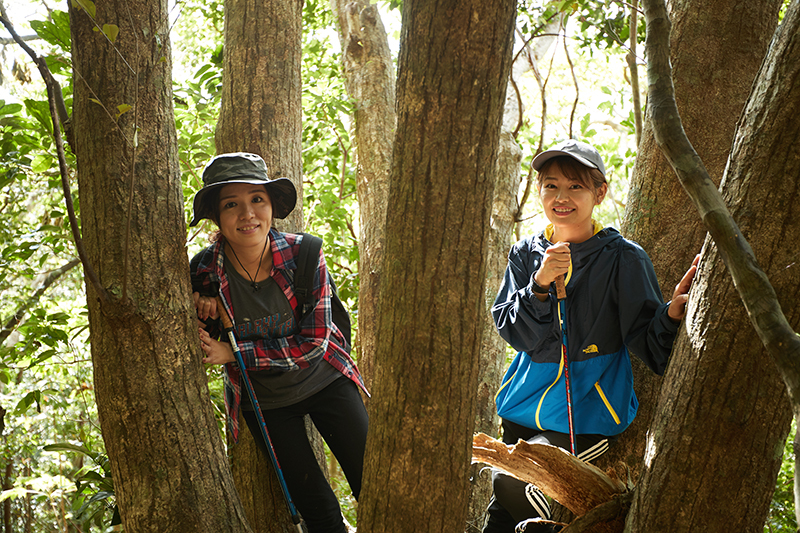
12:30~14:00
A farmer’s restaurant with seasonal produce
At lunch time when we were starving hungry, we went to the restaurant Emi that we were curious about. I ordered the specialty of the day “makachii kumi-sore lunch” recommended by the owner. Makachii kumi-sore means “leave it to me” in Okinawa dialect. The owner is a registered dietitian, and the menu uses lots of vegetables grown in her own field.
Since seasonal vegetables harvested from the field are used every day, the menu changes a bit every season. If the owner is short of vegetables from her own fields, she may get some from the farmers who have been growing shikuwasa and dragon fruit for decades.
Ogimi is famous as a village of longevity. The food that comes from this area is even tastier when it’s cooked here. It reflects the mild tropical climate and the stress-free cultivation of kindly people. After the trekking, we enjoyed food that appeals both to your eyes and body.
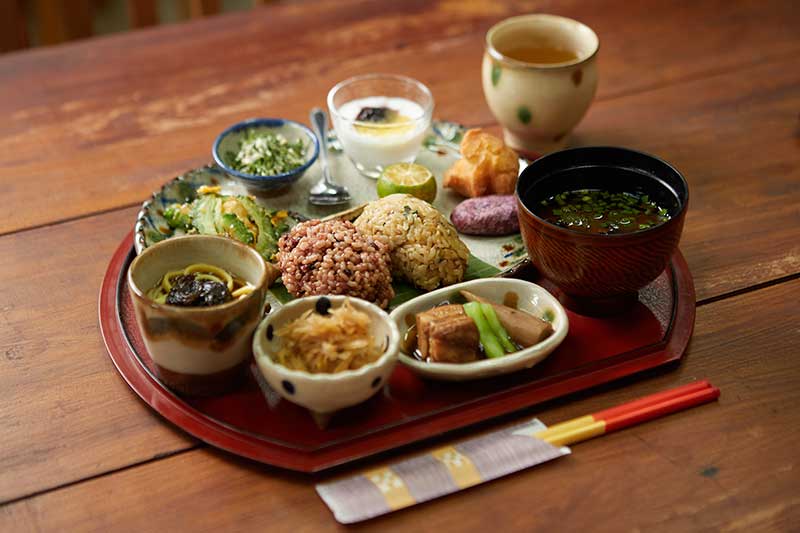
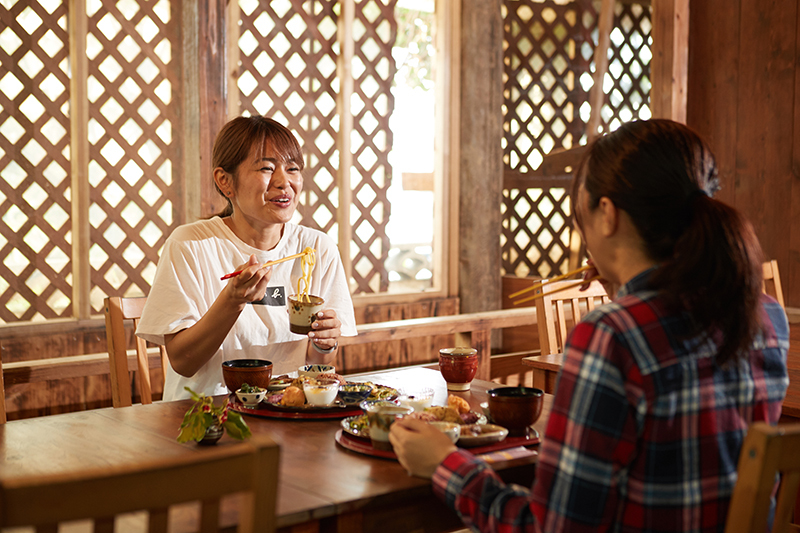
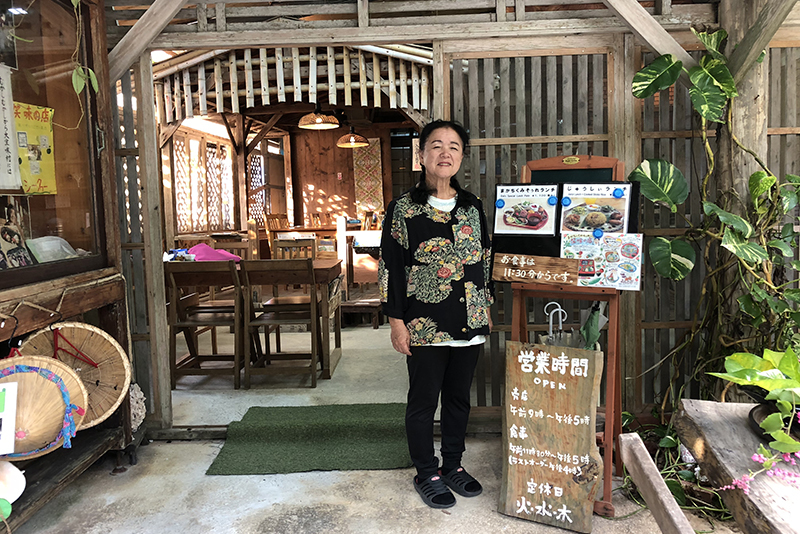
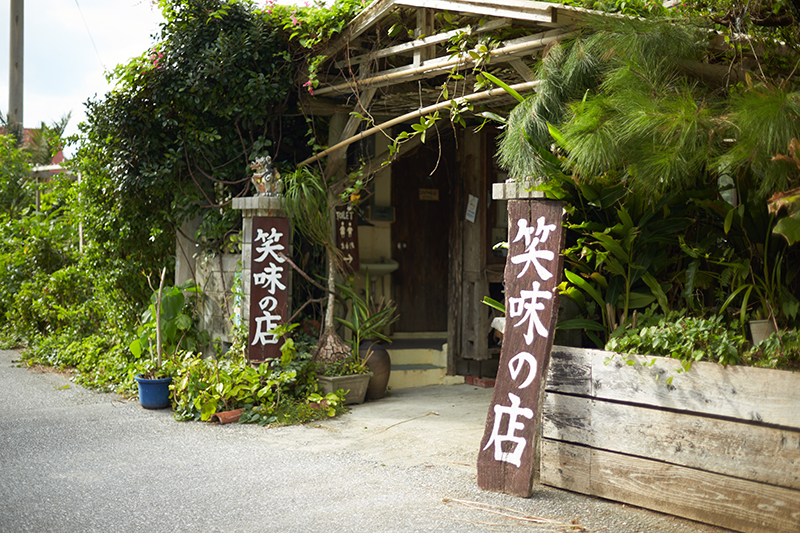
15:00~17:00
Make your own completely unique, original work
Once we’d satisfied body and spirit, we enjoyed a pleasant drive to Higashi village on the east coast. We visited a bingata dyeing studio, where you can try a traditional Okinawan craft. It’s a small workshop in the forest. It was a quiet end to the day, learning about traditional Okinawa culture.
Dyeing a coaster allows you to try the final steps of bingata dyeing without too much complexity. It was like a coloring book, and we concentrated in silence. Dyeing a mini tote bag encompasses the full process. It’s exciting because you don’t know what the finish will look like until the paste is washed off. It’s something to look forward to when we get home.
With bingata, you paint images from the natural world such as plants and animals with the vividness of the Okinawa sun. Spending time quietly concentrating on your work is rewarded with your own unique bingata item. It was a day to learn about the allure of Yanbaru’s nature and culture.
There are various programs for experiencing the natural world of Ogimi village such as homestays and farming workshops. Through memories of time spent with the local people amid the natural environment, Ogimi village will become a wonderful second home.
